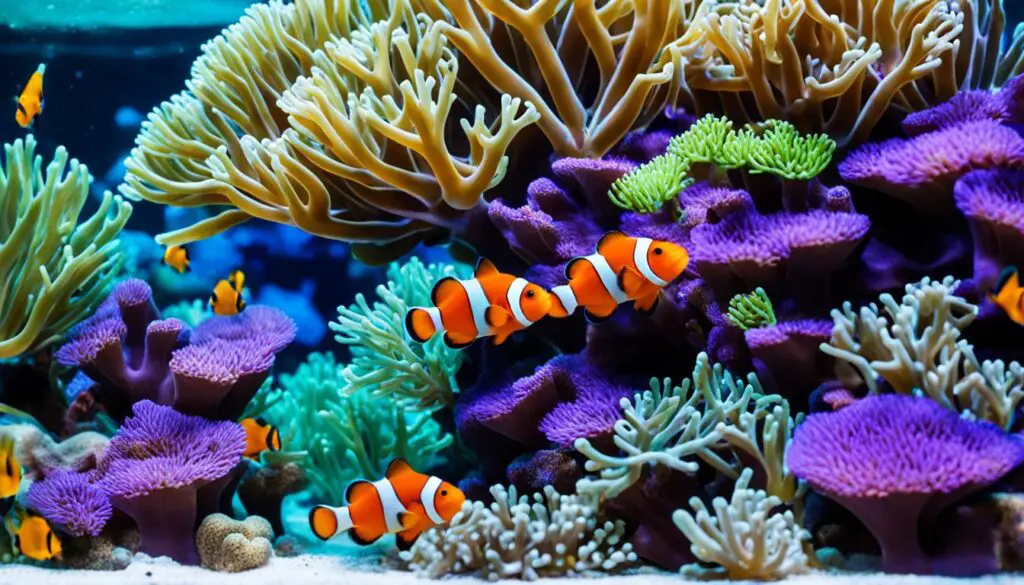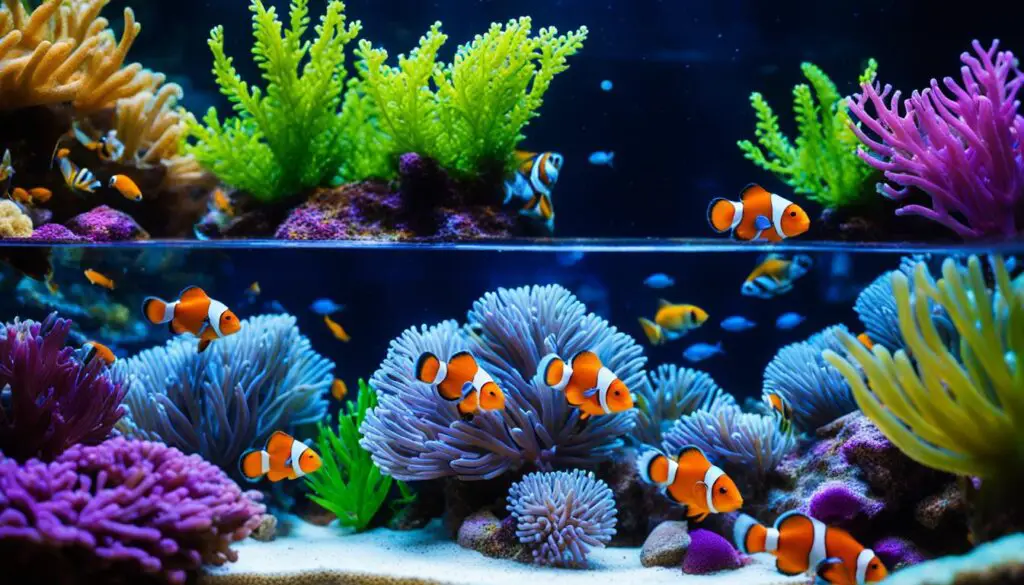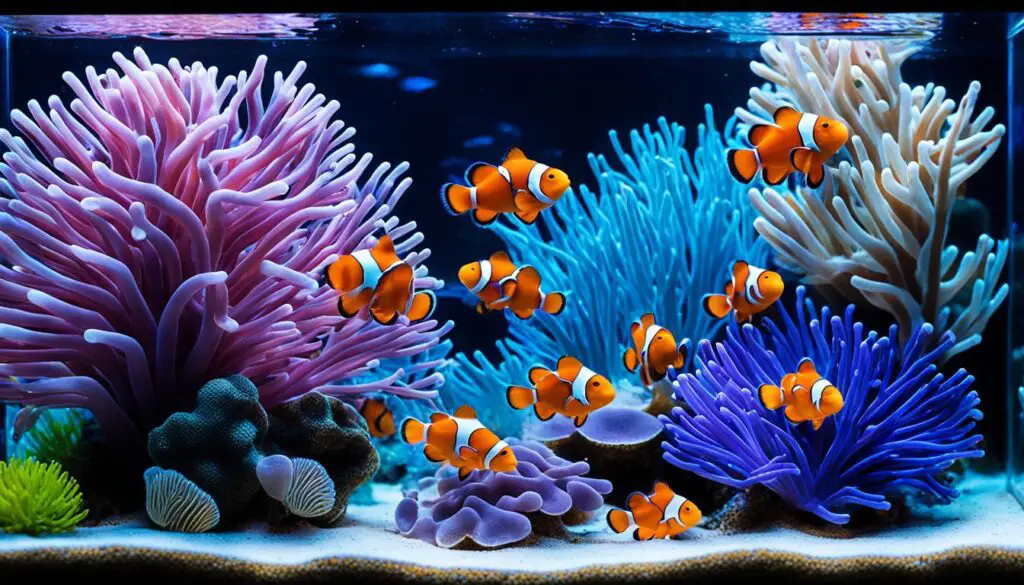Clownfish Social Behavior: Understanding Their World
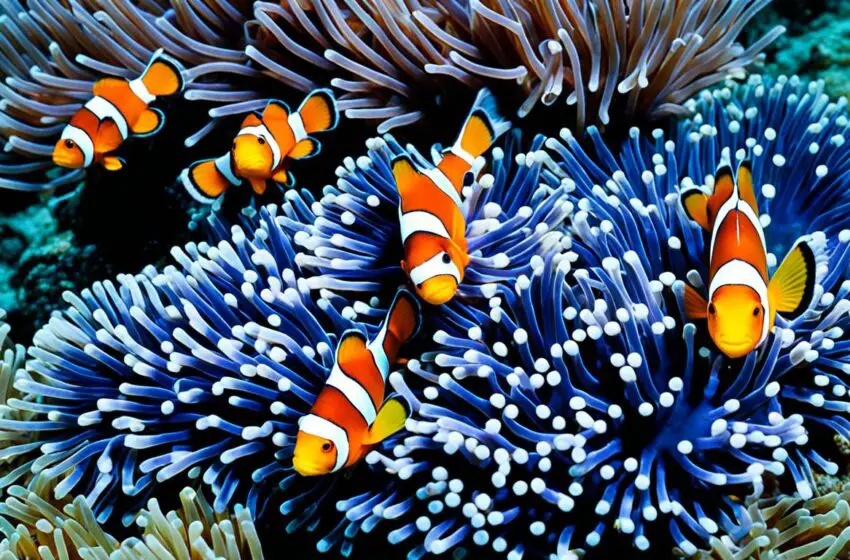
A new study from the Okinawa Institute of Science and Technology provides deep insights into clownfish social behavior. It shows these marine creatures, like the ones in Finding Nemo, are much more than cute. They’re known for their territorial nature and surprising brain power.
Clownfish fiercely defend their anemones and get aggressive with their own kind. Yet, they react differently to other species, noticing unique markings. This shows they can identify their own kind and others by looks. The study also found a clear pecking order within clownfish groups.
This study really changes how we view clownfish. It sheds new light on their complex social lives and intelligence. It’s a big step in understanding these fascinating fish.
Key Takeaways:
- Clownfish, including the famous Nemo species, possess the ability to count.
- Clownfish zealously guard their anemone homes and display aggression towards same-species intruders.
- They show varying levels of tolerance towards other species based on stripe patterns.
- Clownfish colonies have a clear hierarchy, with an alpha female, beta male, and gamma juveniles.
- This research reveals the cognitive abilities and social interactions of clownfish in their natural habitat.
The Perfect Tank Environment for Clownfish
Creating a home for clownfish needs careful planning. You should make their tank like their natural oceans. Clownfish live in the warm waters of the Andaman Sea, Red Sea, and the Pacific. So, keeping the temperature between 75-82°F (24-28°C) is a must. They also need certain sea anemones to live with, like Heteractis magnifica, Heteractis crispa, or Stichodactyla gigantea.
Your tank should have lots of places for clownfish to hide. Using rocks and live corals makes it feel like their reef homes. It’s important to keep the water clean and well-lit. This means you need good filtration, regular water changes, and the right lighting.
A balanced diet is very important for clownfish. They should eat things like zooplankton, bottom-dwelling creatures, and algae. This keeps them healthy and full of energy.
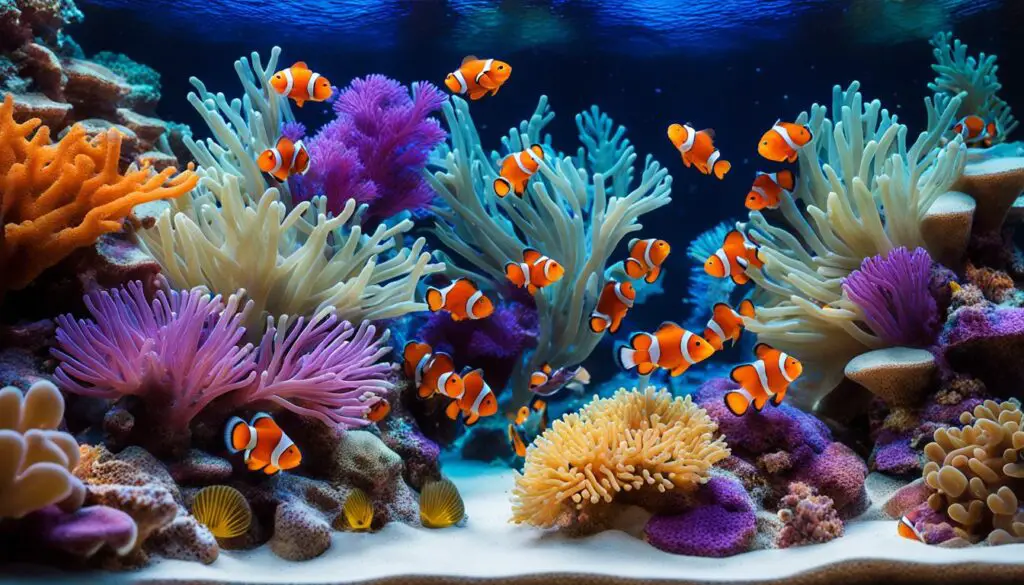
By making a tank that feels like the ocean, you make clownfish happy and healthy. Watch the water quality and temperature to keep them just right. With love and care, your clownfish will be a beautiful part of your home. They’ll bring you happiness for a long time.
The Lifecycle and Reproduction of Clownfish
Clownfish are unique in how they live and reproduce. They start life as males. Later, they can become females if needed. This sets up a group where only the biggest becomes a mom. The rest help raise more babies. This kind of family is called a harem.
If the top female clownfish dies, something special happens. The top male turns into a female. This way, the group still has a mom. It’s this mom that lays eggs near the anemone, a friend plant of the clownfish. The male then becomes a full-time dad. He protects and cleans the eggs until they hatch.
Once the eggs hatch, little larvae appear. They drift off with the ocean currents for about a week. Then they search for their own anemone home. This is a very hard time for them. Other sea creatures want to eat them. And they must find a special home fast.
The lucky ones that find a home become part of a clownfish family. Here, they have the chance to be the main mom one day. This way of life is both interesting and helps clownfish thrive in the ocean.
FAQ
How aggressive are clownfish?
Clownfish can get pretty tough when protecting their home. They defend their anemone space, especially from same-species invaders. Their aggression changes when dealing with different stripe patterns of outsiders.
Do clownfish have a social hierarchy?
Yes, in a clownfish group, there’s a clear pecking order. An alpha female leads, followed by a beta male and gamma juveniles. This ranking brings order and peace to their community.
What kind of tank environment do clownfish need?
Clownfish thrive in tanks that feel like their natural seas. Aim for a stable 75-82°F water temperature. Add anemones suitable for them, like Heteractis magnifica, and lots of hiding places with rocks and live coral.
How do clownfish reproduce?
Clownfish have a unique way of doing this. They start life as males and can switch to females. A breeding pair includes a male and a female, raising up to four young ones. Should the top female die, the top male changes to female to keep things going. The female lays eggs near the anemone, and the male looks after them.
What do clownfish larvae go through before settling?
After hatching, clownfish babies float in the sea for about a week. They use ocean currents as their ride. Once they find a bottom, they search for the right anemone. This time is hard because they must avoid predators and compete with others.

